The integral part of the publishers’ life is devising a business plan leading to monetizing content. One of the most successful strategies is a paywall, which is used by the most influential world newspapers, niche magazines, and WordPress publishers.
Newspapers like “The New York Times”, “The Daily Mail” or “The Wall Street Journal” have successfully generated income through a method of limited access. How is it possible that this way based on paid subscriptions achieved success in the age of immediate, quick and free admission to news and information?
Let us imagine that someone gives you a perfume sample for free. What kind of intention does he have? The purpose of this is for you to try and use it, and finally come back for the full version of the product.
Of course, running a magazine and selling perfumes are two different fields of knowledge. But the mechanism described above is exactly the same as the one that paid strategy is based on, namely to give a potential client a perfume sample or – in the field of publishing – to give the future subscriber part of the free unique content.
You can read a part of the article or a few issues for free, and then buy a subscription. When you pay, you will be able to enjoy full access without restrictions.
This is how it looks from the reader’s point of view. What about the publisher’s perspective?
A paywall is an effective strategy to increase revenue based on restricting access to content via a paid subscription. As a publisher, you can set up a paywall even if you distribute your content via different platforms: on the desktop or in a mobile app.
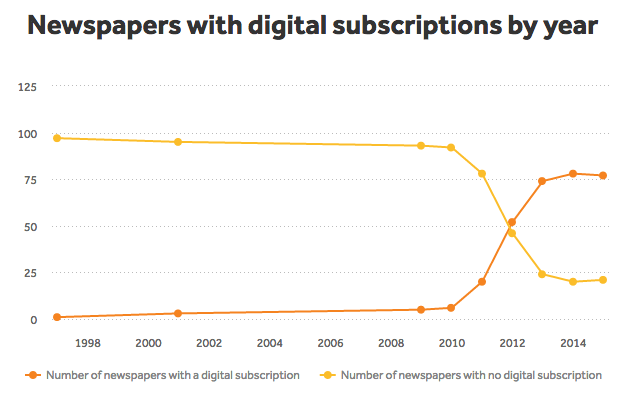
Since 2010, we have been noticing a constant increase in the number of newspapers with digital subscriptions.
This is the result of a combination of new technologies development and the readers’ higher expectations. Publishers are looking for new ways to increase revenues, testing recent ideas and adapting paywall models to users’ individual preferences.
There is something else. Paywall success is based on the readers’ need to get the fastest news updates. Many professionals specify three main reasons responsible for paywall success. These are higher revenue, steady income, and increased reader loyalty.
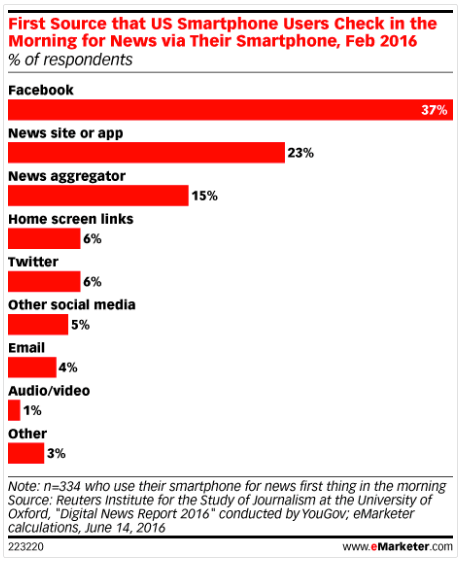
First Source that US Smartphone Users Check in the Morning for News
Who of us is not sleeping with a smartphone at the bed or is not eating breakfast with a phone close at hand? We can all laugh about it or don’t take it seriously, but… there is a grain of truth in these cliches.
More and more people are using their devices for social media reviews or to look for the latest news and information. As we can see, Facebook is the first source they check in the morning. But the strong second place belongs to “news site or app”.
Fresh news with breakfast
People want to have access to news immediately. Also, the readers nowadays need to stay informed regularly.
Devices have become an integral part of our daily activities, which makes being online easier and permanent (God forbid an uncharged battery when something important happens and you have to share it!).
Being constantly in touch with the latest news is also the reason people have loved mobile apps. Users get push notifications with the new content via the branded mobile apps, thanks to which any information update won’t be missed.
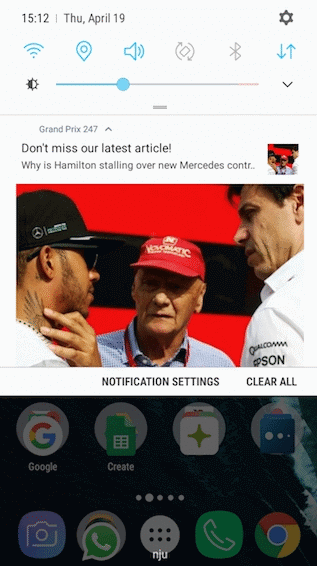
Newspapers are going out of major publishing business if they don’t provide access to online news immediately e.g. via social media or notifications in mobile apps. At the same time, they need to secure constant feeding of website traffic to generate revenue through advertisers, or through paid content.
Today, publishers can’t afford to hold back the best content for a printed publication or wait to give access at a determined time during the month. That’s where the need for a paywall comes in.
The paywall model has proven effective for newspapers because when they gate access, people feel they need to pay for it and they’re used to paying for news. They’re most likely to do this with the publishers and brands they trust most.
Consider the content you offer readers as something they’re not going to find anywhere else. Your uniqueness will encourage them to subscribe – the live reporting, independence, editorial line, style of a publication are value for news readers.
Choose the best solution
Paywall individual customization is the key that allows publishers to increase their income more significantly. Step by step, newspapers, magazines, and blogs are checking out new ideas to adapt the best method of content access to their target audience, business growth, and local environment. They have a choice between a hard paywall, a soft paywall and varying degrees in between.
Let’s take a closer look at the possibilities you have.
A hard paywall requires users to pay to access all content. There is no article available to read without registering first, whether it is free or paid. This potentially increases revenue but decreases traffic. This model is dedicated to brands which have already dominated the market.
Some online publishers improve this model by giving away at least 300 words of each article for free. Below there is a short introduction of a call-to-action button informing us that if we want to read more, we have to click to subscribe.
A hard paywall used by “The Times” & “The Sunday Times” requires paid subscription before getting unlimited daily digital access to their all services.
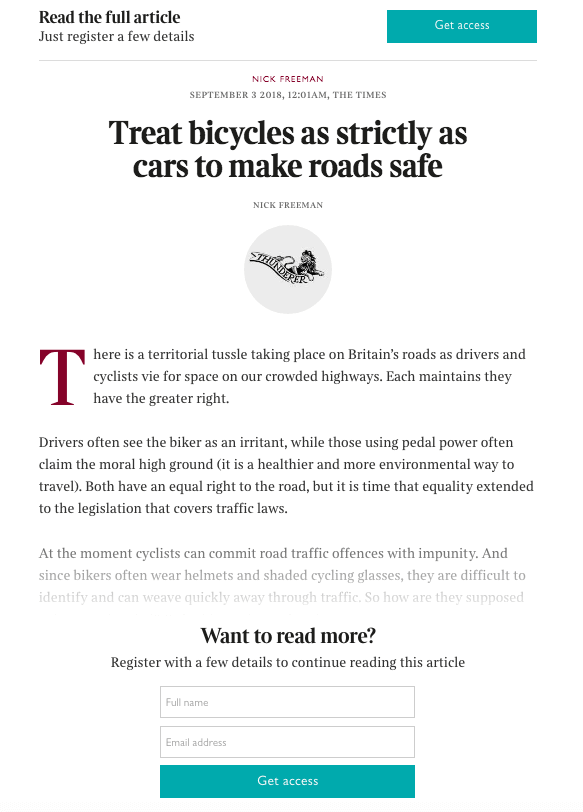
The soft/metered model offers a specific number of free access articles before requiring a paid subscription (after viewing 10-20 articles, the users have to pay if they want to read something else). It is also the most popular model in the United States – 63% of the media have put it in place.
The freemium model consists of giving free access to a part of the site and keeps articles with higher added value for subscribers only (generally representing 10% to 20% of the visible articles). This is the most widespread model for the time being in France in particular, although only a few are deployed (for now) in the United States with only 12% of the publishers who put it in place.
PressPad News Paywall Model
Seeing the online publishers’ needs to expand possibilities of monetizing strategy, we have added paywall to the PressPad News platform. Now, you can use the option to limit access to content distributed via a mobile app.
What does it mean in practice?
- You can impose a limit on articles that can be unlocked by subscription. For example, you can read 3 articles a day (or 2 per week) for free, and in order to do more, you have to pay.
- A subscription may also (but does not have to) remove ads if they exist in the application.
- There is an option to choose a subscription that only deletes ads, and there is no limit on articles in the mobile app.
Tailor-made paywall
One of the first questions that arise when you start to think about using the paywall model is: how much free content is enough.
Before you answer that question, you need to ask yourself a different, more important one: what is exactly the aim of your paywall strategy?
The revenue growth is a natural effect of the method of restricting access to content. But a long-term profit is to get more subscribers. So the real question is how much access you need to give in order to obtain a subscriber.
It is good to test available options to ensure the relevance of an offer.
Implementing paywall strategy requires focusing on data analysis.
- What types of content or categories generate the most subscriptions sales?
- How did the visitors, who became paid subscribers, reach your site?
First of all, you need to determine which types of content and categories directly affect the increasing number of subscriptions, or what advertising platform on social media is worth investing in. This will help you define what works and what does not, what is good for you and what is not.
Make friends with regular data analysis:
- what time do people read?
- how do they discover your content?
- which device do they use?
Thanks to answering these questions, you can adapt your magazine’s line to a wide range of reading habits and as a result, improve conversion rates.
This kind of testing can help you define the readers’ area of interest and allow to customize the magazine offer to attract people by unique content that they will not be able to find elsewhere.
– I am a smaller publisher. Is paywall good for me?
Of course, manage paywall flexibly and customize your strategy to the amount of published content, size of your audience and its needs.
As a small publisher or blogger you have the advantage – your audience is more centered and organized around your niche. This provides a special insight into this group.
Your publishing direction should be creating content which will satisfy this group’s expectations and resolve its problems. Or, if your readers’ needs are already met, you ought to find a way to do it better than your competition.
If you are a small publisher, you’ll want to keep your primary content for free – it attracts your current audience. It’s best to leave hard paywalls for large publishers with a bigger undifferentiated group of readers.
Prepare a special subscription offer
If you offer a trial period or discount for new readers, be sure to mention that in your paywall notice. You’ll see that people are much more likely to give your product a try if they can do so under a special offer or free trial.
Make clear that the content is premium when they are reading it, with an alert or pop-up on the bottom of the page that tells them it’s premium and gives them the number of remaining premium articles they have access to. Remember to design the paywall to be easily read, understood, and adapted to work seamlessly on mobile devices.
How to get prepared before introducing a paywall mechanism?
Build strong relationships based on a newsletter. Include an email field in the paywall floaters – that way you can register visitors’ email and sign them up for your newsletter. If they leave the paid order, you will still be able to engage with them.
Having an email address of your potential or current readers is your key to connect with the audience, be closer to it and present your brand and ideas.
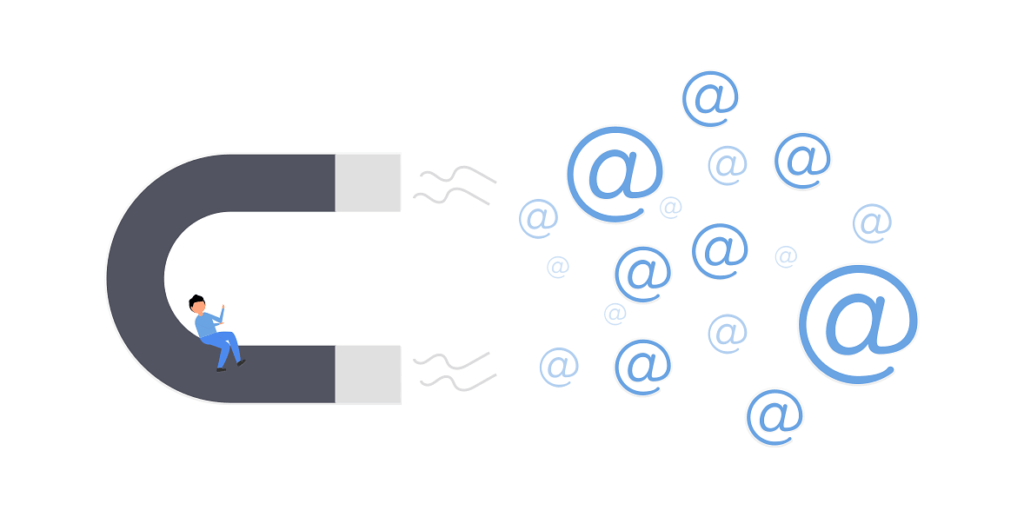
By offering a newsletter, you deliver something of greater value to your readers. This value exchange may encourage more people to sign up; once they’ve signed up, the value will keep them coming back.
Do you remember the free sample of perfume? It’s through such engagement that you can strengthen ties with your readers by showing them that your content is worth paying for.
Balance between SEO and PayWall
If you take care of SEO, remember that Google likes content that meets the search criteria and provides value. This value is what Google wants to see, and ultimately what is in its search results.
Hint: If you decide on a model in which only a part of an article is visible, you should take care of the quality of it. The best way would be to put in this short fragment the answers to the most asked questions related to the main article topic. It makes this part valuable for Google and for readers.
It is also a beneficial information for the readers and an incentive for them to pay for access to all articles.
If your business model relies on subscriptions and premium memberships, it’s imperative that you offer free content (which can be user-generated) to provide value that both the user and Google will appreciate.
News wins
Newspapers subscriptions statistics show that paywall monetization strategy brings profit and increases the number of subscribers which become loyal readers.
The possibility of individualizing a flexible paywall strategy makes the implementation process easier also for smaller publishers and bloggers. It also means the opportunity to use a new source of income for niche magazines.
The news publishers are the ones who gain the biggest profits on the introduction of a paywall model. Thanks to their hard work, trustworthiness and high-quality content, they managed to build up trust among their readers. To the audience that is well taken care of, paying for valuable content comes naturally.

